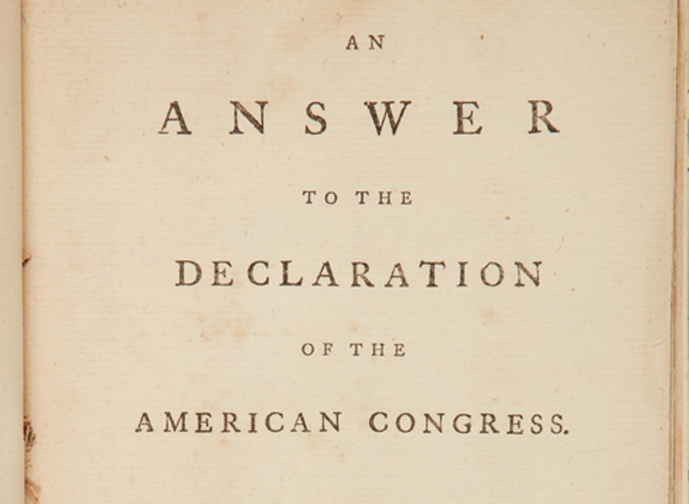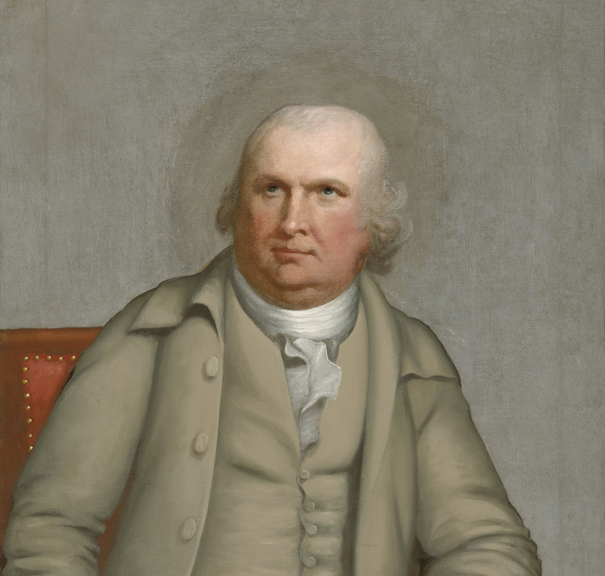 Although often overlooked, New Orleans, as a Spanish colonial city, was the site of pivotal events in the war for American independence from Great Britain. As detailed in an earlier article published in the Journal of the American Revolution, it was here that Bernardo de Galvéz vaulted onto the scene. He rose from his role as governor of one of King Carlos’ distant holdings to perform as a bold and dashing military commander, seizing Britain’s southernmost colonies of East and West Florida, and denying the British the use of the Mississippi River for the duration of the war.
Although often overlooked, New Orleans, as a Spanish colonial city, was the site of pivotal events in the war for American independence from Great Britain. As detailed in an earlier article published in the Journal of the American Revolution, it was here that Bernardo de Galvéz vaulted onto the scene. He rose from his role as governor of one of King Carlos’ distant holdings to perform as a bold and dashing military commander, seizing Britain’s southernmost colonies of East and West Florida, and denying the British the use of the Mississippi River for the duration of the war.
It was also already a vibrant city, with a rich history. The largest American settlement outside of the Atlantic Seaboard, it had been influenced by French and Spanish rule, and by trade with Europeans from all of the other major powers, as well as by the influx of African slaves brought by the settlers. Its food culture, celebrated globally today, was similarly already rich and varied, and we’ll dip but a toe into those waters with this meal.
Ropa Vieja
During the same period as the outbreak of hostilities in the British American Colonies, the Spanish became concerned that they would come under attack by the British, as King George sought to expand his dominion in the New World to include the gold and silver producing regions of Mexico.
To help bolster their numbers in the Louisiana territory for defense of these wealth-producing lands, the Spanish moved several groups of settlers from the Canary Islands between 1778 and 1783[i], and those people brought their own unique take on the Continental Spanish cuisines. One of their typical dishes, Ropa Vieja is simple to make, but has a wonderfully complex interplay of flavors.
As the original recipe relied on long, slow stewing, over a low bed of coals, we’ll make it in a slow cooker, which won’t impart the exact same flavors, but will also free us from having to construct a tripod and firepit to experience this dish.
Heat in a large skillet:
1 tbsp (15 ml) olive oil
Brown on both sides (approximately four minutes each):
2 lb (1 kg) skirt steak
Chop into strips and layer in the bottom of your slow cooker:
3 bell peppers (use red, green and yellow for color, if you like)
1 onion
1 jalapeño pepper
Mix in:
2 cloves garlic, minced
4 tomatoes, blanched, peeled and quartered
2 tsp (5 ml) salt
Transfer the skirt steak into the slow cooker and cook for about four hours at high heat, or six hours on low. When the beef is very tender, shred it with two forks, and serve over rice.
Maque Choux
This dish is believed to be a result of the culinary fusion between the Native Americans and the of the Acadian French, who were forcibly expelled during the French and Indian War from the maritime provinces of what is today Canada, to Louisiana, where they became known as the Cajuns. We’ll cook a version of it based on a recipe[ii] included by the New Orleans Times-Picayune in their recent publication Cooking Up a Storm, a cookbook published to help Katrina survivors replace lost recipes that they’d clipped from the pages of that newspaper over the years.
Cut from about 6-8 ears of corn (which will yield a thicker end product), or thaw from frozen:
2 cups (450 ml) corn kernels
Melt in a saucepan over medium heat:
2 tbsp (30 ml) butter
Sautée the corn for about 3 minutes, and then add:
2 cups (450 ml) onion (about two large onions), diced finely
1 jalapeño pepper, diced finely
Stir well, and continue sautéing, for about 5 minutes, until the onions are soft and translucent. Warm and then stir in:
2 cups (450 ml) light cream
Stir and reduce heat, cooking for about 10 minutes more, until slightly thickened. Add:
1/4 tsp (1 ml) white pepper
1/2 tsp (3 ml) salt
Serve warm, with a pepper sauce if you like.
Louisiana Honey Bread[iii]
Preheat oven to 375° F (190° C), and grease and flour a loaf pan. Blend together:
2 cups (450 ml) flour
1 tsp (5 ml) baking powder
1 tsp (5 ml) baking soda
1 tsp (5 ml) ginger
1/2 tsp (3 ml) cinnamon
Blend separately:
1 cup (225 ml) evaporated skim milk
1 cup (225 ml) honey
1 egg
Combine the wet and the dry mixtures and blend just enough to eliminate any lumps. Pour batter into loaf pan, and bake for 45 minutes. Serve cut into thin slices.
Beignets
These fried confections, thought to be the precursors of the modern donut, date back to Mardi Gras observances in 16th century France[iv]. French colonists carried the recipe with them to the New World, and in particular, to the settlements in Louisiana, during the 18th century, so there is little doubt that residents of New Orleans during the era of the American Revolution would have savored these pastries with every bit as much eagerness as tourists to Café du Monde do today.
The dough needs a long rest time to develop, so it is best to prepare them the night before if you want to have them for breakfast. Since we’re having them as a dessert, we can make it the morning of our meal.
Place the following ingredients in a stand mixer or bread machine:
1 cup (225 ml) lukewarm water
1/4 cup (60 ml) sugar
1/2 tsp (3 ml) salt
1 large egg
2 tbsp (30 ml) butter, softened
1/2 cup (120 ml) evaporated skim milk
4 cups (900 ml) flour
1 tbsp (15 ml) yeast
Blend until a smooth dough is formed. It should be slightly sticky to the touch; add more flour or water to adjust as needed. Turn out onto a lightly-greased pastry board and shape into a ball, then transfer to a greased bowl, cover tightly with plastic wrap and refrigerate for 3-4 hours or overnight. It may rise to about double its bulk, even chilled.
Punch down and, on a well-floured surface, roll to a thickness of about 1/8″ (3 mm) and cut into diamond or triangle shapes.
Heat 2″ (5 cm) of frying oil to a temperature of 360° F (180° C) and carefully slide the beignets into the oil, a few at a time.
Fry on both sides until they float, and then remove from the oil and coat with powdered sugar – a quick shake, one at a time, in a paper bag with some powdered sugar in it will work wonderfully. Serve warm, with café au lait or tea.
[i] Benge (Molero), Dorothy L., and Laura M. Sullivan (Gonzales). Los Isleños Cookbook. Gretna, Louisiana: Pelican Publishing Company, 2000. vii. Ebook. <https://play.google.com/store/books/details?id=XuyJqgScQFsC>.
[ii] Bienvenu, Marcelle, and Judy Walker. Cooking Up a Storm. San Francisco, California: Chronicle Books, 2008. 240. Print.
[iii] Taylor Chalmers, Margaret. Colonial Fireplace Cooking & Early American Recipes. East Lansing, Michigan: Eberly Press, 1979. 54. Print.
[iv] Stradley, Linda. “Beignet History.” What’s Cooking America. N.p.. Web. 8 Jun 2013. <http://whatscookingamerica.net/History/BeignetsHistory.htm>.




















2 Comments
Thanks for a mouth-watering article. I had Ropa Vieja when I was in grad school. We were in Latin American Studies and each week one of our group would cook a national dish. Our Venezuelan entry was Ropa Vieja but others in the group knew of it too. No one knew why it was named ‘old clothes’ but the majority view was that the dish arose from people who used what they had for as long as they had it because new items would be costly. So ‘leftovers’ became a source of the ingredients. The minority view was that old clothes were comfortable to wear and the dish served as a form of comfort food. Leave it to grad students to debate a question without a correct answer.